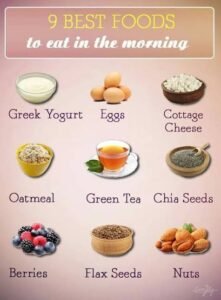Understanding Nutritional Needs

The foundation of any healthy diet is rooted in a thorough understanding of nutritional needs, which encompass both macronutrients and micronutrients. Macronutrients, which include carbohydrates, proteins, and fats, are essential for energy and overall bodily functions. Carbohydrates serve as the primary energy source, while proteins are crucial for repair and growth of tissues. Fats, though often misunderstood, play key roles in hormone production and nutrient absorption. A balanced intake of these macronutrients ensures that the body operates efficiently and effectively to meet its daily requirements.
In addition to macronutrients, micronutrients such as vitamins and minerals are vital for maintaining health. These nutrients support numerous physiological processes, including immune function, bone health, and metabolism. Insufficient intake of micronutrients can lead to various deficiencies that impact overall well-being. It is therefore important to consume a diverse range of foods to ensure adequate levels of these essential nutrients.
Daily caloric intake varies based on multiple factors, including age, gender, weight, and activity level. On average, adult women require approximately 1,800 to 2,200 calories per day, while men typically need about 2,200 to 2,800 calories. Understanding personal dietary needs is crucial; calculating Basal Metabolic Rate (BMR) and considering physical activity can help individuals tailor their caloric consumption to their specific lifestyle. Various online calculators and apps can assist in determining these personalized requirements, making it easier to create a well-rounded diet plan.
Hydration also plays an integral role in nutrition and overall health. Adequate water intake supports digestion, nutrient absorption, and temperature regulation. Recommendations suggest consuming at least eight 8-ounce glasses of water daily, but individual needs may vary based on physical activity and environmental conditions. Prioritizing hydration contributes to improved physical performance and general health.
The Power of Fruits and Vegetables

Fruits and vegetables are fundamental components of a healthy diet, offering an array of essential vitamins, minerals, and antioxidants that contribute significantly to overall health. These natural foods are pivotal in bolstering the immune system, promoting heart health, and enhancing digestive function. A rich variety of produce not only satisfies hunger but also serves as a health powerhouse, aiding in the prevention of chronic diseases.
Fruits, such as berries, oranges, and apples, are known for their high vitamin C content, which supports immune function and helps the body ward off infections. Moreover, these options are often rich in dietary fiber, promoting digestive health by encouraging regular bowel movements and preventing constipation. On the other hand, vegetables like spinach and kale are packed with vitamin K, essential for blood clotting and bone health. Thus, including a wide range of fruits and vegetables ensures that one receives a comprehensive set of nutrients necessary for maintaining vitality.
Antioxidants present in many fruits and vegetables, such as carotenoids found in carrots and lycopene in tomatoes, further provide protective benefits. These compounds help neutralize free radicals in the body, thereby reducing oxidative stress and the potential for chronic illnesses, such as heart disease and cancer. Therefore, emphasizing a colorful plate can enhance nutrient diversity; each hue represents distinct health benefits crucial to a balanced diet.

Incorporating fruits and vegetables into daily meals can be accomplished in various simple yet effective ways. For instance, adding sliced fruits to breakfast, including vegetables in smoothies, or utilizing fresh herbs in cooking can increase the intake of these beneficial foods. Emphasizing the variety and vibrancy of produce not only enhances meals but also maximizes nutrient consumption, resulting in a more nourishing diet.
Lean Proteins: Meat, Chicken, and Fish
Incorporating lean proteins into your diet is essential for maintaining overall health and wellness. Lean meat, chicken, and fish provide vital nutrients that support muscle growth, recovery, and overall bodily functions. The primary distinction between red meat and white meat lies in their fat content and health implications. Red meat, such as beef and lamb, tends to have higher saturated fat levels and can be linked to heart disease if consumed excessively. Conversely, white meat, particularly poultry, is generally lower in fat and calories, making it a more favorable option for individuals seeking to reduce their fat intake.


Fish, especially fatty varieties like salmon, mackerel, and sardines, is recognized for its numerous health advantages. These fish are rich in omega-3 fatty acids, essential fats that have been shown to promote heart health, reduce inflammation, and support brain function. Including fish in your diet two to three times a week can provide significant health benefits. When choosing fish, it is advisable to select wild-caught options whenever possible, as they often contain fewer toxins and are more sustainable than farmed varieties.
To maximize the nutritional value of these protein sources, consider cooking methods that preserve their beneficial qualities. Grilling, baking, steaming, and poaching are excellent options, as they require minimal added fats and retain more nutrients compared to frying. Furthermore, portion sizes should be considered; the ideal serving of meat or poultry is typically around 3 to 4 ounces, while fish servings can range from 3 to 6 ounces, depending on your dietary needs. By carefully selecting and preparing lean proteins, you can enhance your diet with essential nutrients that support a healthy lifestyle.
Creating a Balanced Meal Plan
Establishing a balanced meal plan is essential for anyone seeking to enhance their health through nutrition. It involves thoughtful consideration of various food groups, portion control, and a bit of creativity to ensure that each meal meets nutritional requirements while remaining enjoyable. A balanced meal typically includes carbohydrates, proteins, fats, vitamins, and minerals, which collectively nurture the body.
To begin crafting a balanced meal plan, it’s crucial to measure appropriate portions for each food group. A general guideline is to fill half your plate with fruits and vegetables, a quarter with protein sources, and the remaining quarter with whole grains. Utilizing measuring cups or a food scale can aid in achieving these portions, promoting consistency without the risk of overindulgence.
Meal prepping is an effective strategy to maintain this dietary balance. Spending a few hours on the weekend to prepare meals for the week can simplify daily nutrition management. This may include cooking grains in bulk, cutting vegetables, or even assembling ready-to-eat dishes that can be stored in the refrigerator or freezer. Keeping meals visible and easily accessible minimizes the temptation to opt for less healthy options when hunger strikes.
Diversity in meal options is also important. Incorporating an array of foods will ensure that you receive a comprehensive range of nutrients. This can be achieved through thematic weekly menus, such as a vegetarian week or a focus on international cuisines, encouraging exploration of various flavors and ingredients.
Finally, consider including a few simple yet delightful recipes in your meal plan that blend health with satisfaction. Options like quinoa salad with colorful vegetables, grilled chicken with brown rice, or chickpea stir-fry can be both nutritious and delectable. Engaging with healthy eating as a lifestyle choice will make it more sustainable over time. In conclusion, with practical strategies for portion control, meal prepping, and diversified menus, anyone can create a balanced meal plan that fosters healthy eating habits and supports their long-term wellness goals.


